As you know, I don’t do off-topic entries very often, so I hope that I can be forgiven for an off-topic entry now and then. I’m trying to keep this blog going, with reduced chess contentâ„¢, while taking a little bit of a break from the game.
Last week I spent a week in Crete at a math conference. I’m not much of a world traveler, and I never even think about traveling to Europe for a vacation (too expensive), so this was a rare opportunity for me. (I was an invited speaker, so my expenses were paid.)
On Tuesday the sunlight reflecting off the Mediterranean created thousands of shimmering diamonds, which were constantly moving and changing. I’m afraid that this reduced-size picture doesn’t really do justice to the view.
The Romans may have put the “arch” in “architecture,” but the Greeks like arches, too. This is another view from the balcony outside my room. I was staying at the Orthodox Academy of Crete in the village of Kalymbari. In spite of its name, it is more of a conference center, and is not a religious institution (although religious groups do hold retreats there pretty often).
Actually, the Venetians, not the Romans, had a very big influence on Cretan architecture, because Venice ruled the island from the 13th century until it was taken over in 1645 by the Turks. As a strategic island located near three continents, Crete has experienced many waves of invaders and changes of rule during its history — which I will not attempt to recount here.
The nearest city to the conference center was Chania, whose harbor was built by the Venetians. The photo above shows the lighthouse at the entrance to the harbor.
On my last day in Crete I went with a couple of friends to see the ruins at Knossos. This was the center of the Minoan civilization, which vanished mysteriously around 1650 B.C. To put it another way, it was an ancient ruin even when Homer was composing his idylls and “ancient” Greek culture was just being born. The most likely theory is that Knossos was ruined by a tsunami that struck the island when a volcano on the nearby island of Santorini erupted. The disaster may have been the origin of the Atlantis myth.
Knossos left me a bit dissatisfied. The English archaeologist who excavated it in the early 20th century, Arthur Evans, decided to reconstruct some parts of the palace. Basically, anything standing, anything with a roof, or anything painted is a modern reconstruction. So even though the view is beautiful, and certainly more attractive than if Evans had left the ruins intact, it gave me sort of a feeling of being in a Greek version of Disneyland — it’s not quite real.
A street mime in Irakleio (Heraklion, the largest city in Crete) pretends to be a statue.
The famous painter, El Greco (born in Crete, though he became famous in Spain), pretends to be a statue. Oops, he really is a statue, and those are pigeons on his head, who appear to have used his bust for a toilet. Mr. Greco (or should I call him El?) doesn’t appear to be too pleased about it.
Back to chess next time!
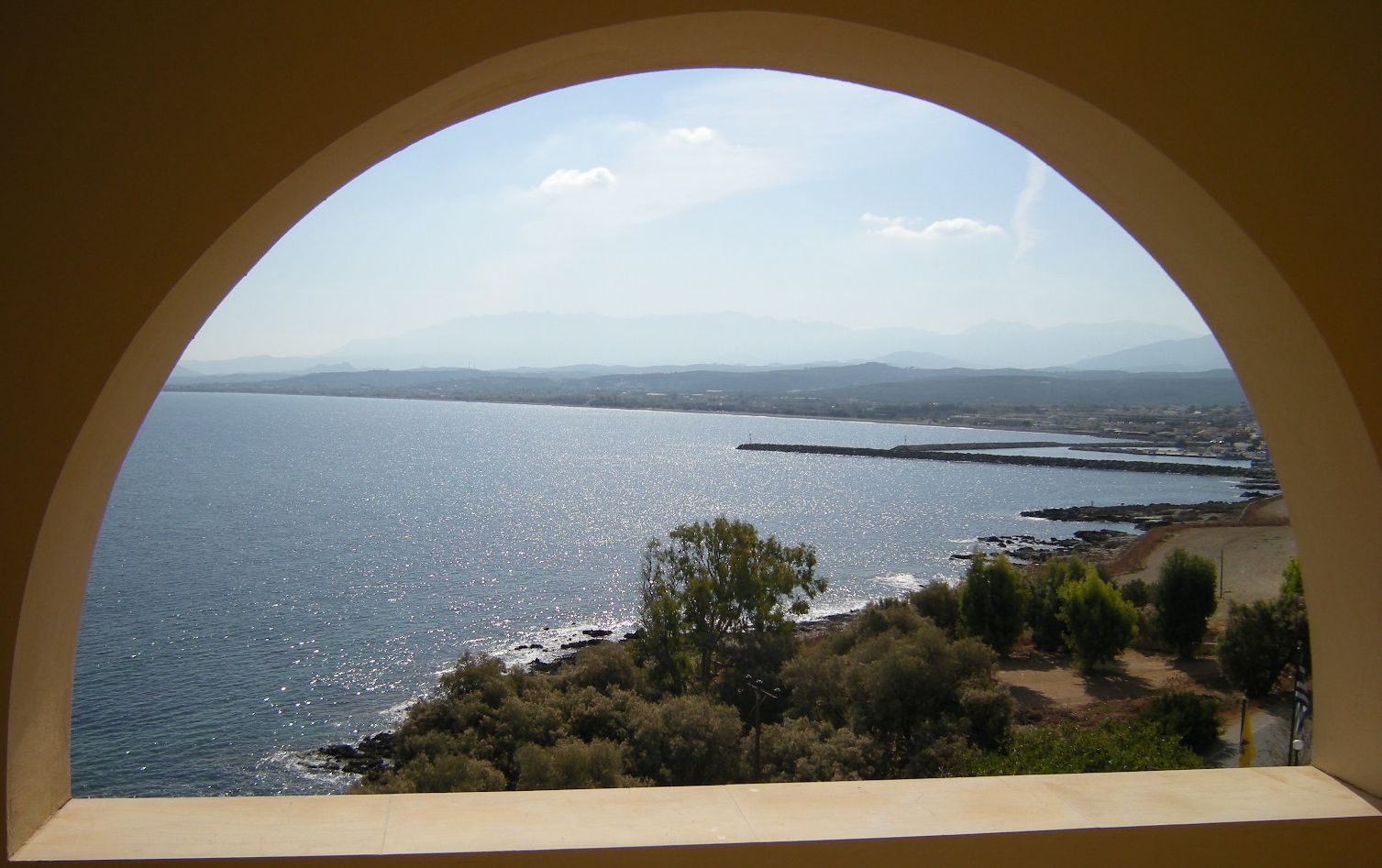
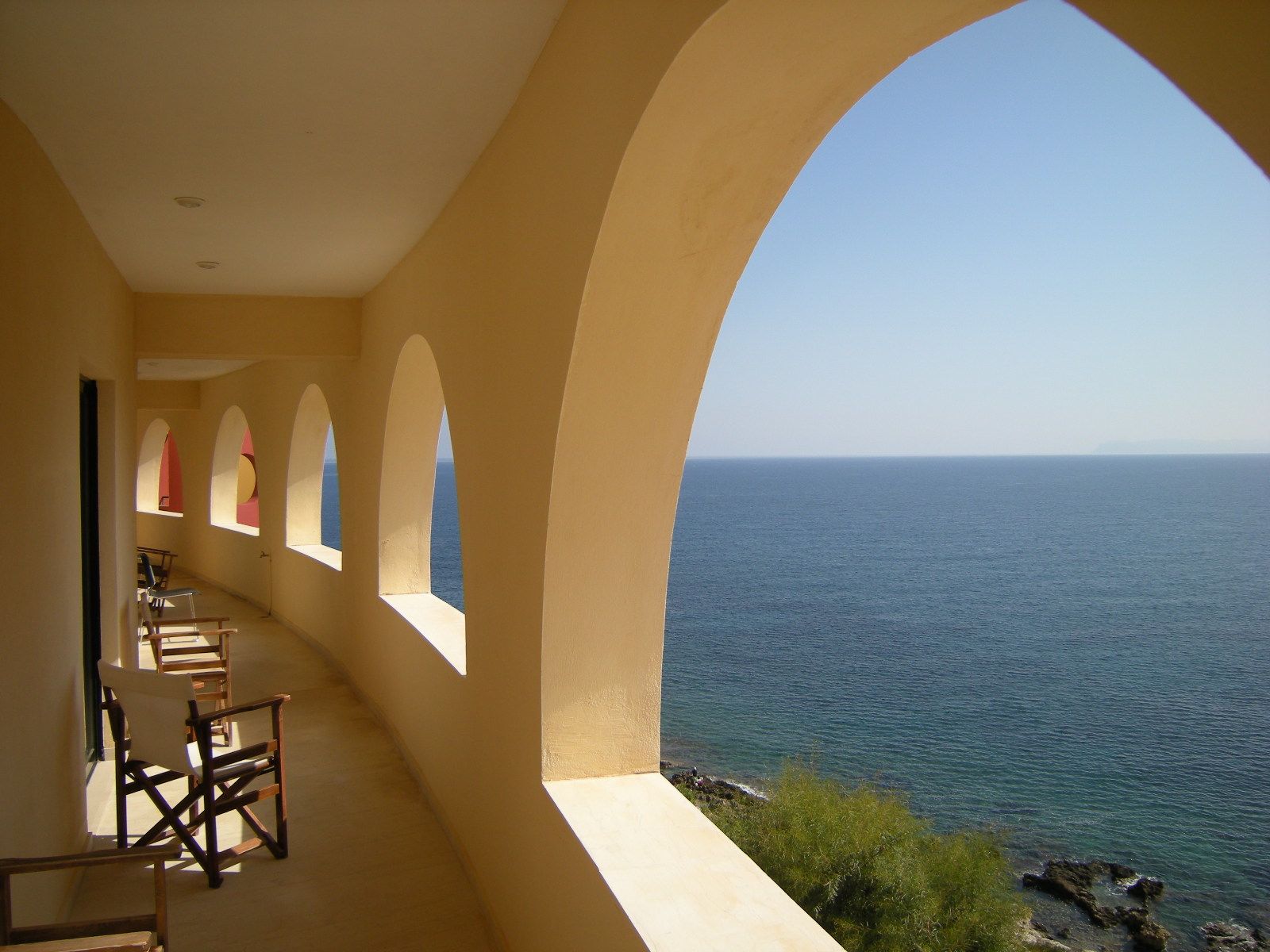
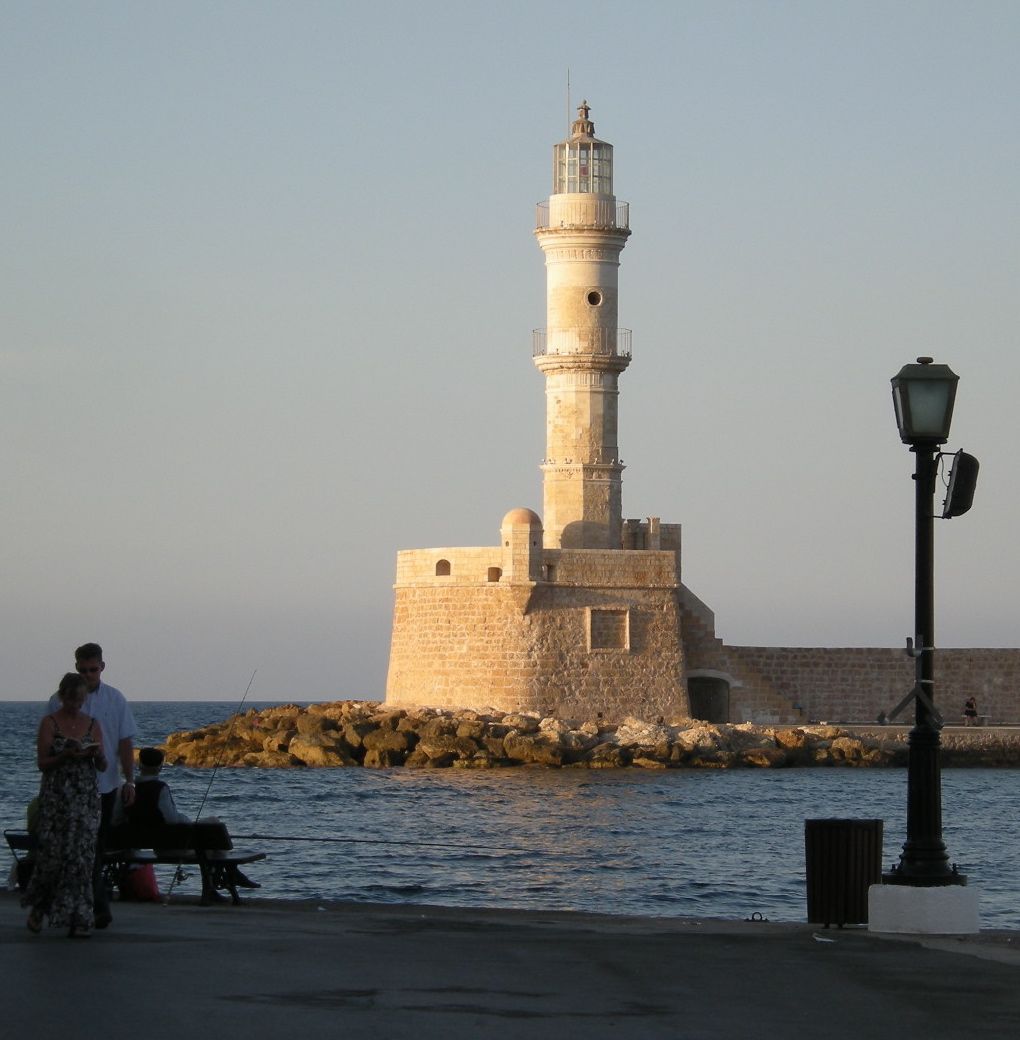
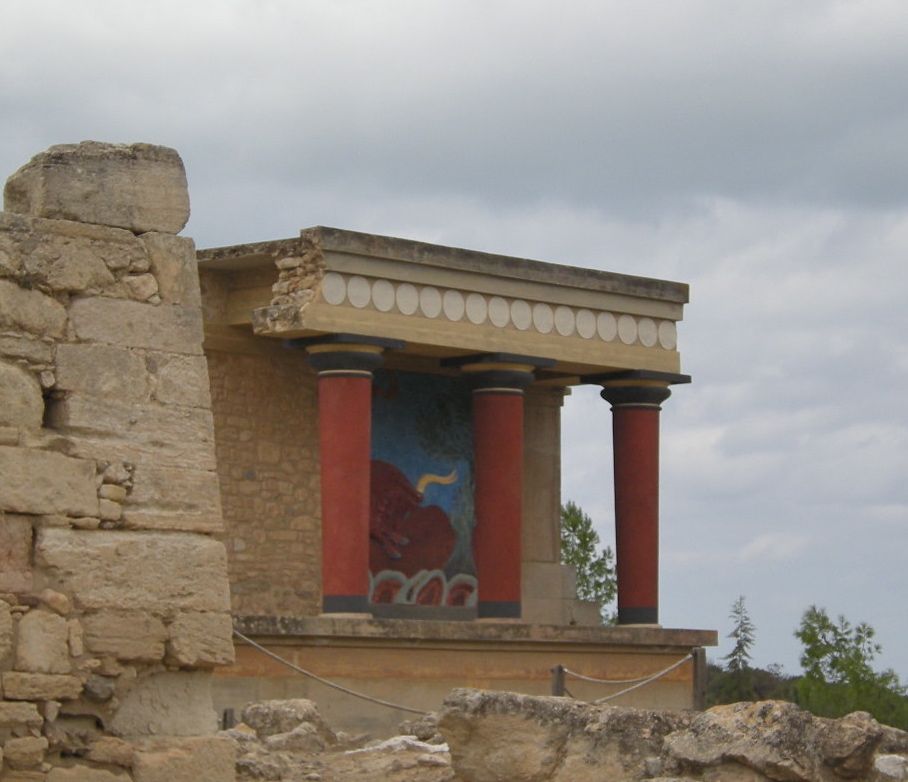
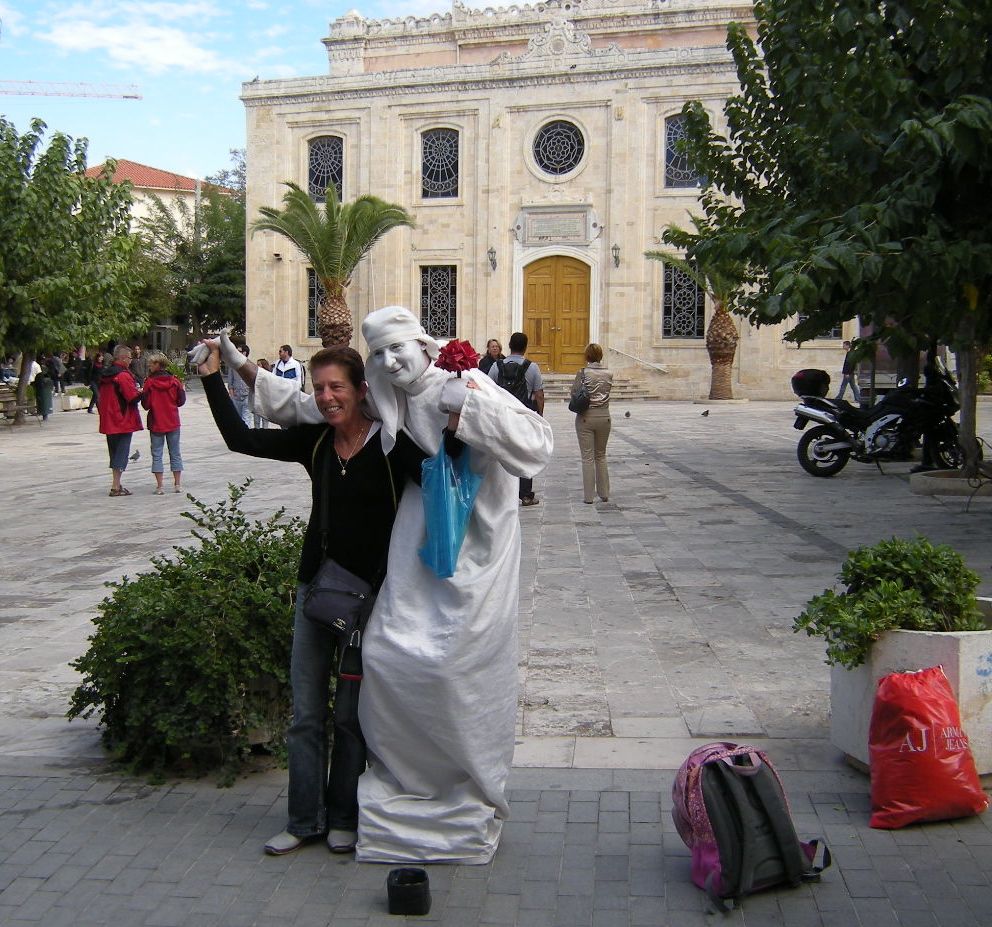




{ 2 comments… read them below or add one }
Absolutely STUNNING pictures! I’m so glad you went off topic today. 🙂 Travel is my great love and you put a big smile on my face. 🙂
I was wondering if I could get your permission to use some of the information on this site for a school project? Thank you.